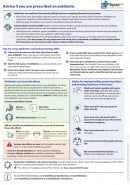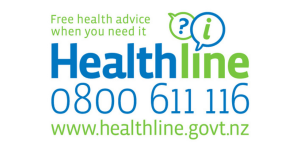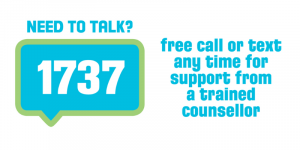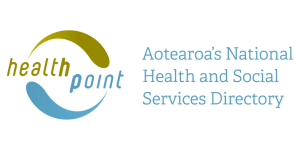Cefalexin
Sounds like 'kef-a-lex-in'
Key points about cefalexin
- Cefalexin is an antibiotic used to treat different infections caused by bacteria.
- Cefalexin is also called Cefalexin (Sandoz®, Flynn®) and Cefalexin ABM®.
- Find out how to take it safely and possible side effects.

Cefalexin is an antibiotic belonging to the cephalosporin family. It's used to treat infections caused by bacteria, such as infections of the urinary tract, skin or chest. It can also be used for dental infections or ear infections.
It works by killing or stopping the growth of bacteria (bugs) which gets rid of the infection.
Cefalexin is sometimes used to prevent infections. It doesn't work against infections caused by viruses.
In Aotearoa New Zealand cefalexin is available as capsules (250 mg or 500 mg) and liquid (125 mg or 250 mg in 5 ml).
- The dose of cefalexin will be different for different people depending on the type of infection and your age.
- The usual adult dose is 500 mg, 3 or 4 times a day. Some people may need a larger dose.
- The dose for children will depend on their body weight. It may be given 2, 3 or 4 times a day.
- Your healthcare provider will advise you how long to take cefalexin for (usually 5 to 7 days).
- Always take your cefalexin exactly as your healthcare provider has told you. The pharmacy label on your medicine will tell you how much cefalexin to take, how often to take it, and any special instructions.
- Timing of your doses: You can take cefalexin with or without food. Try to space your doses evenly throughout the day.
- 2 times a day – this should be in the morning and in the evening.
- 3 times each day – this should be in the morning, early afternoon and at bedtime.
- 4 times each day – this should be about 4 hours apart, for example 7am, 11am, 3pm and 7pm.
- Capsules: Swallow your capsule with a drink of water. Don't chew them.
- Liquid cefalexin: Shake the bottle well and use an oral syringe or measuring spoon to measure each dose. For information on how to give cefalexin to children, see cefalexin information for parents and carers.(external link)
- Missed dose: If you forget to take your dose at the correct time, take it as soon as you remember. Try to take the correct number of doses each day. Don't take 2 doses at the same time to make up for a forgotten dose.
- Finish the course: It's best to take the whole course of antibiotics for the number of days your healthcare provider has told you to. Don't stop taking it, even if you feel your infection has cleared up.
Here are some things to know when you're taking cefalexin. Other things may be important as well, so ask your healthcare provider what you should know about.
- Penicillin allergy: Let your healthcare provider know if you are allergic to penicillin or any other antibiotics. You may be more likely to have an allergic reaction to Cefalexin if you're allergic to any penicillins.
- Cefalexin liquid: Store your cefalexin liquid in the fridge and discard any remaining liquid after your course is finished. You can return any unused medicine to your pharmacy.
- Alcohol: Cefalexin doesn't directly interact with alcohol. This means that most people could have the occasional drink while taking it without any serious problems. However, if cefalexin makes you feel sick (nausea), don't drink alcohol as it will make you feel worse.
- Driving: Cefalexin can make you feel dizzy. Be careful when driving or using tools until you know how this medicine affects you.
- Pregnancy or breastfeeding: Talk to your healthcare provider if you're pregnant, planning a pregnancy or want to breastfeed.
- Other medicines:
- cefalexin interacts with some medicines, herbal supplements and rongoā Māori, so check with your doctor or pharmacist before starting cefalexin and before starting any new products.
- If you're taking the contraceptive pill, you don't need to use additional contraception if you're taking cefalexin. But if you have diarrhoea (runny poo) or vomiting (being sick) that lasts more than 24 hours, absorption of the contraceptive pill may be affected. If you have diarrhoea or vomiting, ask your healthcare provider for advice.
- Vaccines: Cefalexin may stop the oral typhoid vaccine from working. Have a space of 3 days between the typhoid vaccine and this antibiotic.
Like all medicines, cefalexin can cause side effects, although not everyone gets them. Often side effects improve as your body gets used to the new medicine.
| Side effects | What should I do? |
|---|---|
|
|
|
|
|
|
|
|
|
|
Read more about medicines and side effects and reporting a reaction you think might be a side effect.
The following links provide further information on cefalexin.
Cefalexin(external link) New Zealand Formulary Patient Information
Cefalexin oral suspension(external link) Consumer Medicine Information, Medsafe, NZ
Cephalexin ABM capsules(external link) Consumer Medicine Information, Medsafe, NZ
Brochures
Cefalexin for bacterial infections(external link) New Zealand Formulary for Children, NZ, 2015
Advice if you are prescribed an antibiotic(external link) BPAC, NZ, 2024
Advice if your child is prescribed an antibiotic(external link) BPAC, NZ, 2024
Medicines and side effects(external link) Healthify He Puna Waiora, NZ, 2024
5 questions to ask about your medications(external link) Health Quality and Safety Commission, NZ, 2019 English(external link), te reo Māori(external link)
Apps/tools
Cefalexin paediatric dose calculator
Medication reminder apps
References
- Cefalexin(external link) New Zealand Formulary
- Cefalexin(external link) New Zealand Formulary for Children
- Cephalexin ABM capsules(external link) Medsafe datasheet, NZ
- Cefalexin Sandoz(external link) Medsafe datasheet, NZ
- Antibiotics – choices for common infections(external link) BPAC, NZ, 2024
- Urinary tract infections (UTIs) – an overview of lower UTI management in adults(external link) BPAC, NZ, 2021
- Management of impetigo(external link) BPAC, NZ, 2021
- Diverticulitis – pockets of knowledge(external link) BPAC, NZ, 2023
- Revisiting antibiotic use in New Zealand – how does your prescribing compare?(external link) BPAC, NZ, 2024
- Scabies – diagnosis and management(external link) BPAC, NZ, 2022
Brochures
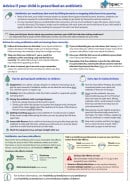
Advice if your child is prescribed an antibiotic
BPAC, NZ, 2024
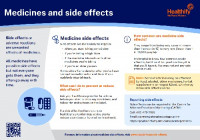
Medicines and side effects
Healthify He Puna Waiora, NZ, 2024
Credits: Sandra Ponen, Pharmacist, Healthify He Puna Waiora. Healthify is brought to you by Health Navigator Charitable Trust.
Reviewed by: Stephanie Yee, Pharmacist, Auckland
Last reviewed:


